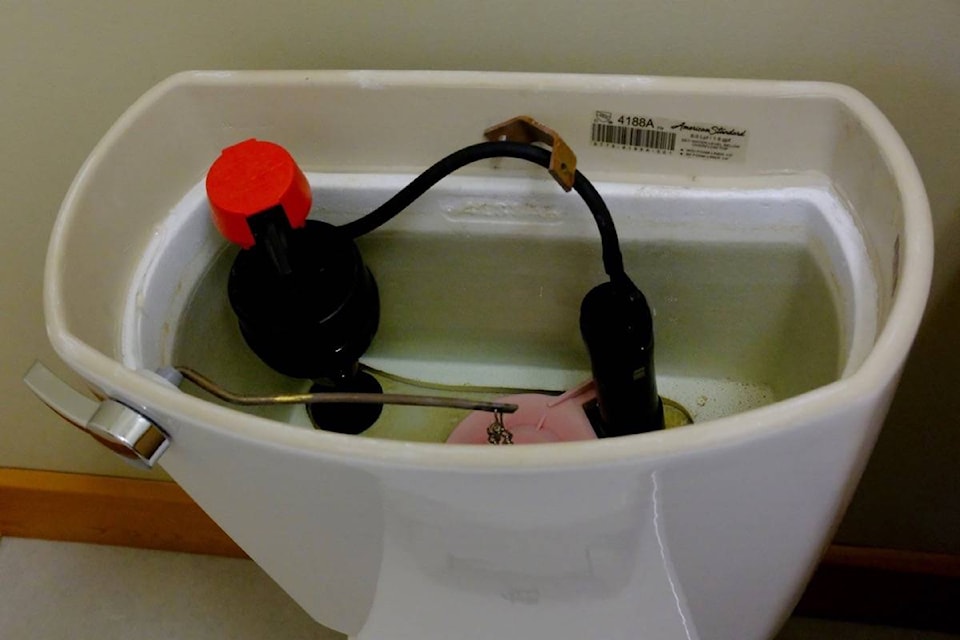One leaking toilet can waste 178 litres of water per hour. That’s about 1.6 million litres per year per leaking toilet.
Consultant data analyst Rory Gallaugher reported that and similar statistics to a very attentive city council at its Dec. 3 meeting – statistics that are likely to have a major effect on Nelson’s water supply.
For several years the city has been installing water meters in industrial, commercial and institutional (ICI) buildings in Nelson, for the purpose of data collection, following a recommendation in the city’s Water Master Plan, written in 2007 and updated in 2017.
The meters are equipped to monitor and track hourly, daily, and monthly water use.
Most ICI buildings now have now been equipped with meters, and over the past year, Gallaugher said, 40 to 50 of them have shown 24-hour continuous flows – water flowing in and out of the building continuously, even though the businesses are not open at night. The main reason is leaking toilets.
Gallaugher gave one persuasive example.
In a Nelson multi-unit commercial building, monitoring discovered a continuous 24 hour flow.
Gallaugher and his team discovered a leaking toilet (the main leak) as well as a secondary leak that was a water fountain that was triggering automatically throughout the night.
“This one toilet was leaking to a loss of 175 litres per hour,” Gallaugher said, “every hour of the day. One leaking toilet can lead to a lot of water use.”
He said most toilets leak for two reasons: the flapper will leak water or the floater is incorrectly adjusted and water is flowing into the overflow tube.
The building manager fixed the toilet.
“Eighty-two per cent of the water coming into that building was being lost in that one toilet,” Gallaugher said. “We got it down to zero per cent.”
This saved 1.5 million litres at this single facility over a year.
“So the numbers are quite shocking,” Gallaugher said. “It really really adds up. It’s so great that we can fix these things so easily.”
He said that in addition to toilets, the main water-loss culprits are swamp coolers, freezers, ice-makers and other appliances that cool with water.
In another example, Gallaugher said he worked with a building manager to fix an irrigation system, “which was pouring water into the parking lot.”
He offered the following projected numbers for the whole project, which will be completed in January.
• Prior to fix: 11.551 cubic metres per hour lost
• After fix: 4.425 cubic metres per hour lost
• Saved: 7.126 cubic metres per hour or 62,423,960 litres per year
Councillor Keith Page’s enthusiasm about this data was typical of the appreciative response at the council table.
“There are some significant water savings there, and we should be really proud of this work,” he said. “The signature problem identification I have seen here is just excellent.”
Plugging leaks in the water system complements another arm of Nelson’s water-saving efforts, the improvement of its water supply, with the goal of counteracting potential drought caused by climate change and wildfire.
Related:
• Nelson council adopts water plan
• Completion of Selous Creek line improves Nelson’s water supply
bill.metcalfe@nelsonstar.com
Like us on Facebook and follow us on Twitter
